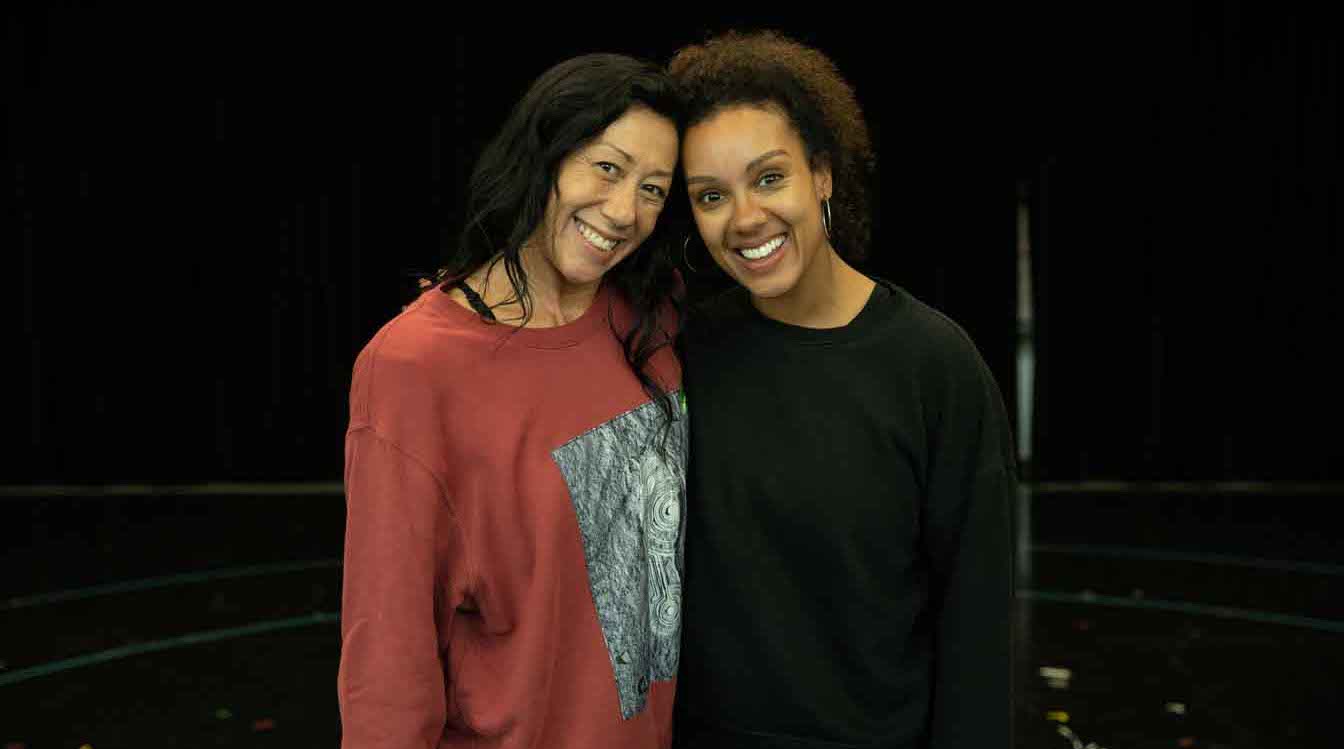Shortly after Dance Informa conducted the interview for this piece, Tina Turner died at her home in Switzerland, aged 83. We send our condolences to Tina’s loved ones, and to the cast and crew of TINA.
Where does an artist find joy, especially when the pressures of expectation and repetition are ever present?
For a choreographer working within the long-established traditions of the musical, where narrative and other overlays tend to dominate, there can often be less creative latitude, not to mention a diminished chance to grab the limelight. Indeed, this may put some off. But not Simone Mistry-Palmer.

Speaking from Sydney, where she is working as the International Associate Choreographer on the multi award-nominated hit show, TINA – The Tina Turner Musical, the UK based dance maker reveals, “It’s often more what you would call staging. In fact, even the most simple movement can be as effective as a five-minute number.”
Point being, as a choreographer for the musical stage, you are sometimes more like a director, blending movement (blocking) with character and song arcs. “Choreography is so much more than steps,” Mistry-Palmer argues. “But behind every step, behind every arm movement, there is a reason, even if you’re doing something minimalistic. So, I would say that’s the way you navigate through it.”
The other key, she insists, is the team. In general, musicals are larger scale productions than most dance works (with the possible exception of the classical ballet canon), and so the dancer/choreographer relationship is likely less intimate, with input coming from a variety of equally critical sources.
“It very much depends on the team you’re working with,” Mistry-Palmer elaborates. “You have to be on the same page, and as long as you have a great partnership within your team, you have an open kind of fluidity of working. So, sometimes I think there’s a misconception that choreography or dance is just big, hard-hitting numbers, and you have to see a lot of steps. But, in Tina, for example, the show is staged choreographically, and it might even be that people are just walking or coming on stage with a purpose; and you might not think that’s choreographed, but it is.”

For the cast and crew of Tina, there was, of course, another source of inspiration. The lady herself, Tina Turner, on whose life the show is based. As Mistry-Palmer says, she was “wonderful and gracious” and gave plenty of her time to the show’s creatives. Translating that source material into choreography was both tricky and simple.
“When you put the steps onto a performer, and you tell them that this is direct source information, it tends to translate instantly, and they respond. They know,” she emphasises. “But we also wanted to make sure that we weren’t doing a carbon copy, choreographically, of what Tina used to do.”
Indeed, it is here that Mistry-Palmer drills into the layers. Having worked on the original 2018 London production of Tina, she has now journeyed with it across iterations in New York, Madrid and elsewhere, (Sydney being the latest). In that time, she has worked with many dancers, always seeking to allow them a degree of individual and cultural nuance.

“Every musical is a little bit different, but the beauty of Tina is that every character is individual. Meaning, we’re not asking anybody to be a carbon copy of anybody else on that stage. Our show isn’t about fab ensemble people doing the exact same thing. We want them to always be their character.”
Yet, having said this, Tina’s globe-trotting choreographer also acknowledges the need for a certain conformity and repeatability of performance. “It’s those attention to detail things, the fine tuning, that make a show great,” she contends. “Also, when you come from a dance background, you can use your own experiences to find those details.”
Thus, when Ruva Ngwenya takes to Sydney’s Theatre Royal stage in May as Tina Turner, Mistry-Palmer will likely be in the wings noticing the subtle shifts and small details; and any sense that choreographing for a big musical is creatively limiting will be thoroughly refuted.

Perhaps, in the auditorium, we will not notice, but she will. For someone who has spent a lifetime in dance and theatre – ballet at three, tap at four, leaving home at 16 to train in London – each performance of Tina will create new opportunity.
“It’s like, if somebody has a little flavour or something, I might think, ‘Ooh, I like that.'” For the artist, it seems, the joy is so often in the process, the making of work, rather than the finished product.
TINA – The Tina Turner Musical is currently rollin’ in Sydney at Theatre Royal. For tickets and more information, visit www.tinathemusical.com.au.
By Paul Ransom of Dance Informa.

















